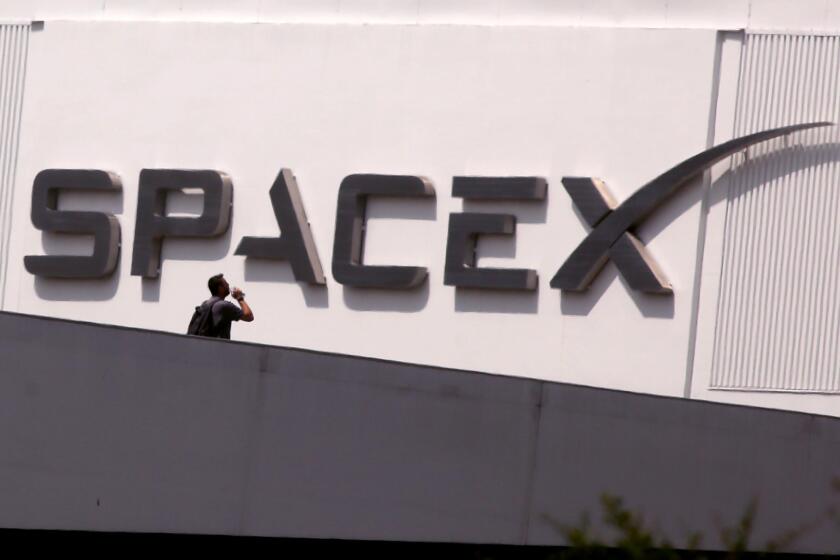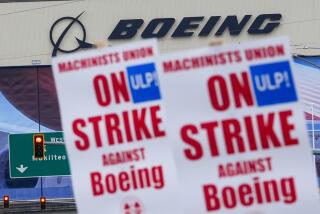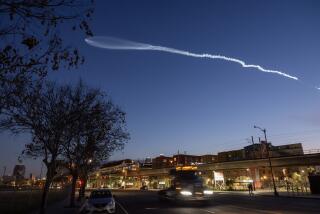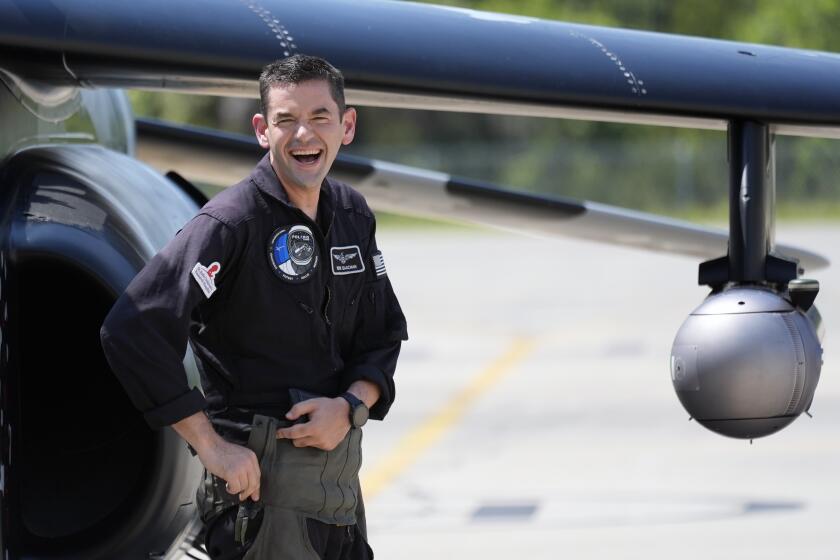Boeing is looking to jettison the space business. Why it might hold on to its El Segundo satellite operation
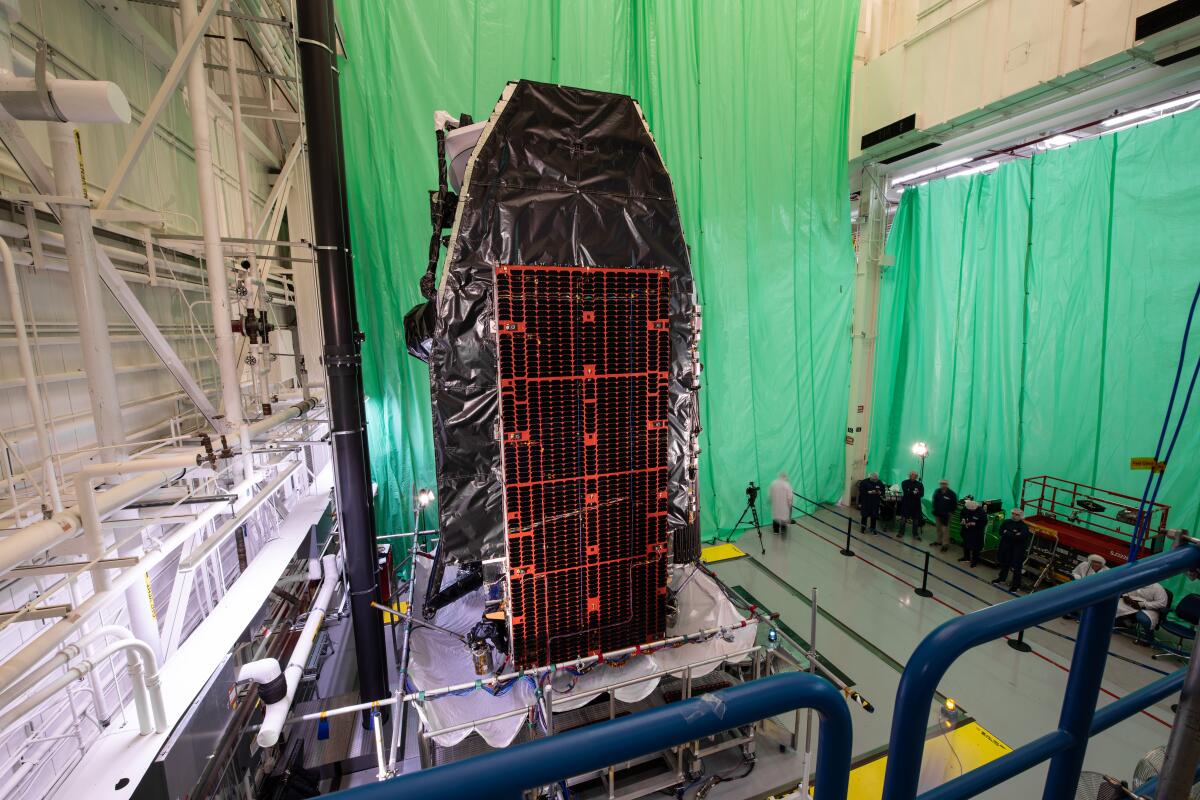
- Share via
With its manufacturing practices under scrutiny, its machinists on strike and losses piling up, Boeing is said to be considering selling parts of its fabled space business. But few industry analysts think Boeing will put its extensive El Segundo satellite operations on the table.
New Boeing Chief Executive Kelly Ortberg said during a recent earnings call that the aerospace giant was considering shedding assets outside of the company’s core commercial aviation and defense businesses, adding that Boeing was better off “doing less and doing it better than doing more and not doing it well.”
Elon Musk’s announcement that he’s moving SpaceX headquarters to Texas could present a blow to Hawthorne and the Southern California space economy that it helped to revive.
That could mean that Boeing sees no future for its troubled Starliner spacecraft, which was developed to service the International Space Station. The Arlington, Va., aerospace giant also has been trying to exit its United Launch Alliance joint launch venture with Lockheed Martin. Both programs face stiff competition from Elon Musk’s SpaceX, which recently announced it was moving its headquarters from Hawthorne to Brownsville, Texas.
But any asset sale is not expected to encompass Boeing’s satellite manufacturing operations in El Segundo, which include a 1-million-square-foot plant with several thousand workers it acquired in 2000 with its purchase of Hughes Electronics Corp.’s space and communications business.
“It’s not a booming growth business, but there’s no reason for Boeing to get out anytime soon,” said Marco Caceres, an aerospace analyst at Teal Group, noting the continuing demand for the large satellites made at the facility despite changes in the industry.
Shedding parts of it space business would be a landmark decision for Boeing, which has deep ties to the space program in Southern California — where it has built rockets, the X-37 space plane and components for the space station.
Ortberg’s comments come amid manufacturing concerns over its key 737 commercial jet program and a machinists strike that is estimated to be costing $50 million a day. Boeing raised $21 billion in a stock sale this week to shore up its balance sheet.
Boeing also has been the target of multiple whistleblower lawsuits that have alleged lax safety and manufacturing practices that resulted in quality-control issues.
The Wall Street Journal first reported that Boeing was considering selling parts of its space business last week. A Boeing spokesperson said the company “doesn’t comment on market rumors or speculation.”
The El Segundo satellite plant makes large satellites for commercial, government and military customers, including the O3b mPOWER communications satellite for SES, a Luxembourg telecommunications company. Other programs include a $440-million defense contract that Boeing was awarded in March to build another Wideband Global Satcom satellite, which provide fast and secure communications for the U.S. and its allies.
Caceres said manufacturing large satellites remains lucrative for now, though the trend has been for networks of thousands of smaller satellites, such as SpaceX’s Starlink broadband network.
“It’s still a good business but it’s going to be diminished, because it really is these big, mega-constellation systems that are the future,” he said.
In 2018, Boeing acquired a maker of small satellites called Millennium Space Systems, which also is based in El Segundo and whose operations have been partially integrated with the company’s existing plant. The company has received U.S. defense contracts for satellites to detect new threats such as hypersonic missiles.
Other Boeing space businesses in the region expected to survive any restructuring include Spectrolab, a Sylmar subsidiary that makes solar cells for satellites and other space applications. Boeing also is expected to continue its participation in the Space Launch System, a massive rocket developed in Huntsville, Ala., that NASA plans to use to send astronauts back to the moon.
The clearest choice for a possible sale or program closure, analysts agree, is the Starliner capsule built to service the International Space Station with crews and supplies. The spacecraft was manufactured at the Kennedy Space Center in Florida and launches from nearby Cape Canaveral Space Force Station.
Boeing was awarded a $4.6-billion contract in 2014 to develop the craft and has been hit with some $1.5 billion in cost overruns, but the vehicle has yet to be certified. Meanwhile, SpaceX was awarded a smaller contract to develop a crewed capsule, based on its existing Cargo Dragon capsule, and that craft has made more than a dozen trips to the station.
In a blow to Boeing, NASA decided in August to have SpaceX return two astronauts brought to the space station by Starliner in June after the capsule developed propulsion problems while docking on its third test flight. Although the Starliner returned remotely in September, NASA and Boeing are still investigating what went wrong.
Also seen as expendable is Boeing’s participation in the United Launch Alliance, a joint venture it formed in 2006. It claims a perfect mission success rate in more than 150 military and commercial launches. ULA is based in Denver and launches from Cape Canaveral and Vandenberg Space Force Base in Santa Barbara County.
The venture introduced its new Vulcan Centaur rocket this year, which is partly reusable and lowers launch costs to about $110 million. It is more powerful than its SpaceX competitor, the Falcon 9, but that rocket has a fully reusable booster and flight costs starting at less than $70 million.
The space industry has been rife with speculation about who might acquire ULA — Jeff Bezos’ Blue Origin space company has been rumored as a possible buyer — but no deal has emerged, possibly because the price is too high, said Laura Forczyk, executive director of space industry consulting firm Astralytical.
Although the business is not as strong as it used to be, ULA’s reliability, a shortage of launch vehicles and the new rocket’s technical advances means it can still attract business, she said, adding: “There’s just so much demand for launch services.”
More to Read
Inside the business of entertainment
The Wide Shot brings you news, analysis and insights on everything from streaming wars to production — and what it all means for the future.
You may occasionally receive promotional content from the Los Angeles Times.
